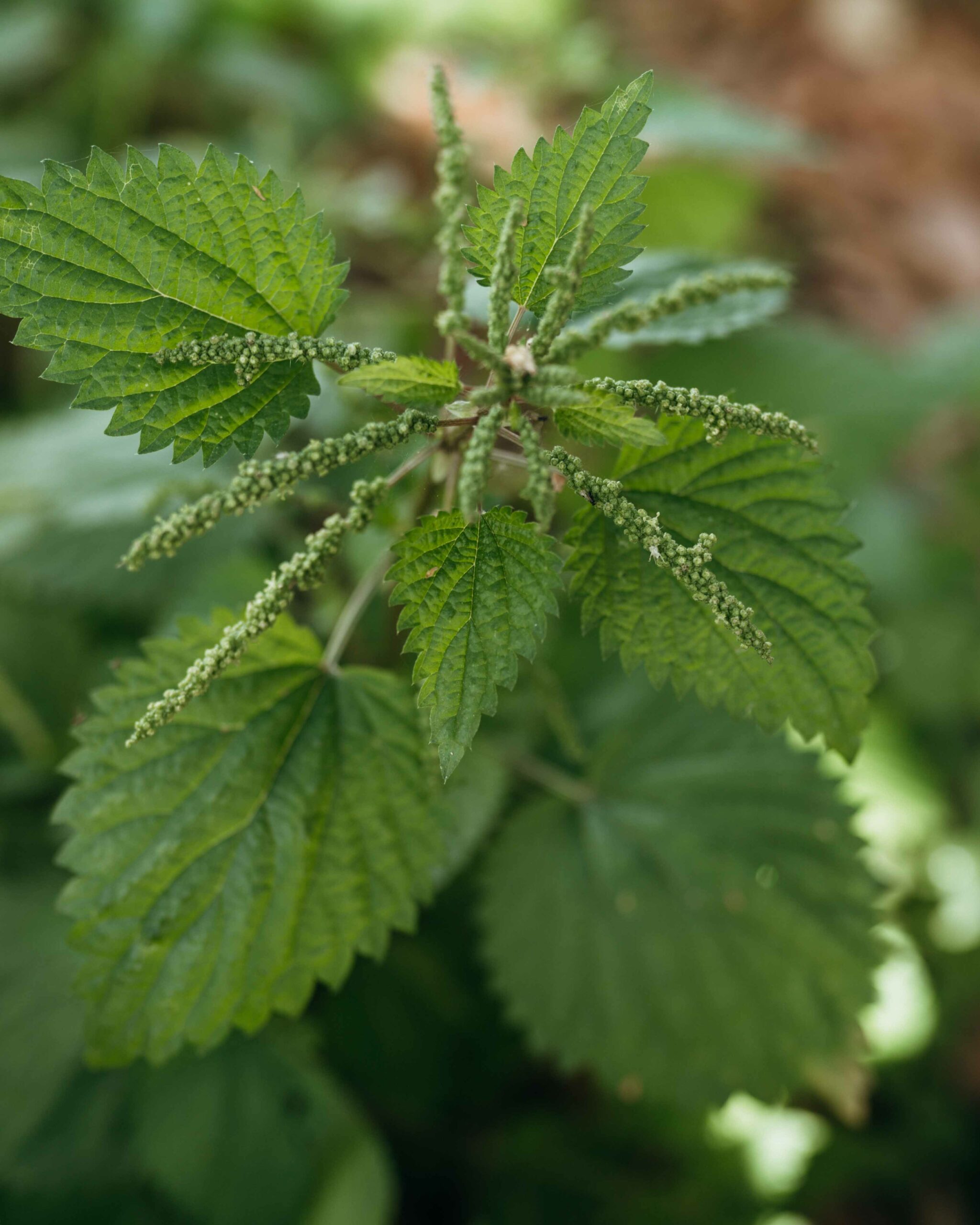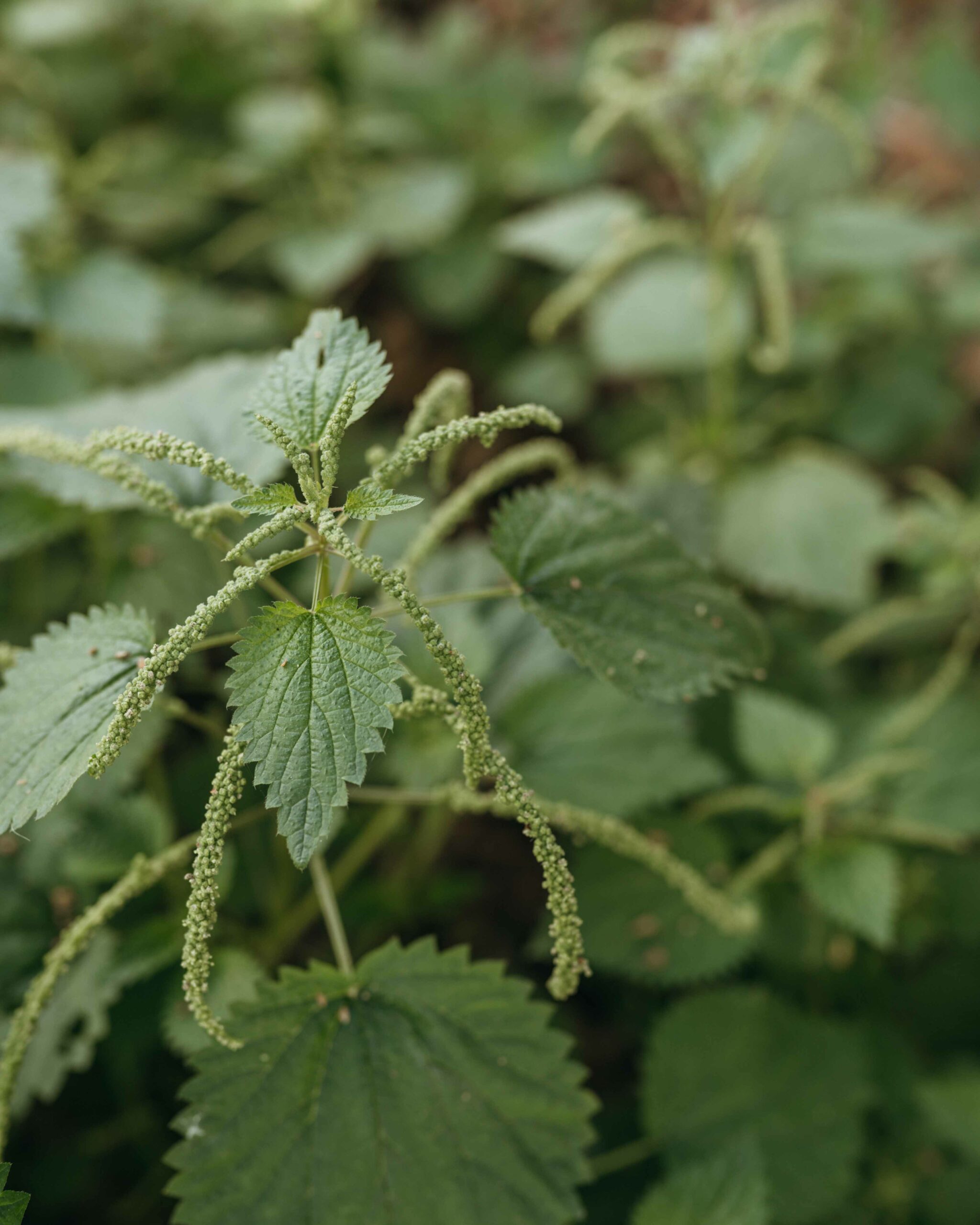Urtica dioica
BRENNESSEL
Englische Bezeichnung: Nettle, Common Nettle, Stinging nettle
Spanische Bezeichnung: Ortiga
Familie
Brennnesselgewächse (Urticaceae)
Hauptbestandteile:
Vitamine A, C, E und K, Riboflavin, Thiamin und Mineralien (Kalzium, Chrom, Magnesium, Mangan, Phosphor, Kalium, Kieselsäure, Eisen, Zink), Eiweiß, Ameisensäure und Histamin sowie Chlorophyll
Verwendung:
Stängel, Blätter, Rhizome, Samen
Wirkungsweisen:
-
Adstringierend
-
Alterativ
-
Entzündungshemmend
-
Milchbildend
-
Blutstillend
-
Anti-asthmatisch
-
Blutgefäßerweiternd
-
Harntreibend
-
Nährstoffreich
Geschmack:
Adstringierend, Salzig
Energie:
Kühlend, Trocken
Ernte-Hinweise:
Im Frühjahr und Frühsommer werden vor der Blüte die obersten 5 cm der Pflanzen geerntet. Man erntet die Samen im Herbst, wenn die Bündel der winzigen Blüten flauschig aussehen und zum Stängel herunterhängen.
Es empfiehlt sich, die Brennnessel mit Handschuhen zu ernten. Man sollte die Brennnesselblätter vor dem Verzehr kochen oder zerstampfen um die Brennhärchen unwirksam zu machen.
Brennnesselblätter ergeben eine wunderbare Suppe oder Pesto und können wie Spinat zubereitet werden. Die Stängel und Blätter können entsaftet und zu einem grünen Getränk oder Smoothie hinzugefügt werden. Brennnesseln sind reich an Vitaminen und Mineralien (daher der „salziger“ Geschmack): Kalzium, Eisen, Magnesium, Kalium, Zink und die Vitamine C, A und K.
In der Kräuterkunde sind Brennnesselblätter als mineralstoffreicher, harntreibender Tee bei brennendem oder schwerem Wasserlassen, Arthritis und Gicht nützlich.
Brennnessel wirkt außerdem entzündungshemmend und kann zur Milderung von Allergien sowie auch für verschiedene Hautkrankheiten sehr förderlich sein.
Resources:
Hoffmann, D. (2003). Medical herbalism: The science and practice of herbal medicine. Rochester, VT: Healing Arts Press.
Thayer, S. (2006). The forager’s harvest. Birchwood, WI: Forager’s Harvest Press.
Smith, E. (2008). Therapeutic herb manual: A guide to the safe and effective use of liquid herbal extracts. Williams, OR: Ed Smith.
Family
Urticaceae
Parts Used:
Stems, leaves, seeds
Properties:
Astringent
Alterative
Anti-inflammatory
Lactic
Hemostatic
Anti-asthmatic
Vasodilator
Diuretic
Nutritive
Harvesting tips:
Harvest the top 5 cm of the plants in spring and early summer before flowering. You harvest the seeds in the fall when the bundles of tiny flowers look fluffy and hang down to the stem.
It is recommended to harvest the nettle with gloves. The nettle leaves should be boiled or crushed before consumption to make the stinging hairs ineffective.
Use:
Raw, steaming, sautéing, baking
-
e.g.: as a vegetable garnish or in stews, pasta dishes, salads, smoothies
Nettle leaves make a wonderful soup or pesto and can be prepared like spinach. The stems and leaves can be juiced and added to a green drink or smoothie. Nettles are rich in vitamins and minerals (hence the „salty“ taste): calcium, iron, magnesium, potassium, zinc and vitamins C, A and K.
In herbalism, nettle leaves are useful as a mineral-rich diuretic tea for burning or heavy urination, arthritis and gout.
Nettle also has an anti-inflammatory effect and can be very beneficial for alleviating allergies, as well as for various skin conditions.
Familia
Urticaceae
Partes aprovechables:
Hojas, semillas, tallo
Propiedades:
Astringente
Alterativa
Antiinflamatorio
Láctico
Hemostático
Antiasmático
Vasodilatador
Diurético
Rico en nutrientes
Indicaciones de Cosecha:
En primavera y a principios de verano, se cosechan los 5 cm superiores de las plantas antes de la floración. Las semillas se recogen en otoño, cuando los manojos de flores diminutas parecen esponjosos y cuelgan del tallo.
Es aconsejable cosechar la ortiga con guantes. Hay que hervir o triturar las hojas de ortiga antes de comerlas para que los pelos urticantes no sean efectivos.
Uso:
Esta planta medicinal es aprovechada casi en su totalidad, debido a que cada parte cumple una función de las antes mencionadas en particular.
Se puede tomar silvestre o que haya cumplido un proceso de secado previo, este último, es especial para la elaboración de té e infusiones.
Las hojas se pueden incluir en los platos favoritos, pero mayormente se utiliza en la cocina para las ensaladas.
Las hojas de ortiga constituyen una sopa o un pesto maravillosos y pueden prepararse como las espinacas. Los tallos y las hojas se pueden exprimir y añadir a una bebida verde o a un batido. Las ortigas son ricas en vitaminas y minerales (de ahí su sabor „salado“): calcio, hierro, magnesio, potasio, zinc y vitaminas C, A y K.
En herboristería, las hojas de ortiga son útiles como té diurético rico en minerales para el ardor o la pesadez al orinar, la artritis y la gota.
La ortiga también tiene un efecto antiinflamatorio y puede ser muy beneficiosa para aliviar las alergias y también para diversas enfermedades de la piel.








































